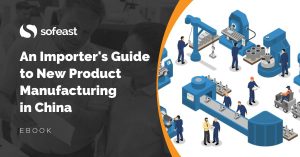
Every year, thousands of inexperienced buyers are coming to China to find a supplier and launch production.
However, getting a perfect pre-production sample is not enough. Do you know who is going to make your products, and in which conditions?
Launching production in China soon? Follow these steps…
Here are the steps buyers should be following when launching production in China in order to maximize success and avoid the major pitfalls:
- Visit a factory (and write its address down), or get it audited by a third-party inspection firm.
- If you have serious doubts about your supplier’s relationship with this factory, pay for a background check on your supplier’s company. You might discover that you are dealing with a middleman.
- Get a written confirmation that 100% of production will take place there.
- If you feel particularly worried about this point, work with a specialized lawyer to draft an OEM agreement that includes this term and that can be enforced in China.
- Keep a pre-production sample that you approved, and write your requirements about the products, their labelling, and their packaging. Be as precise as possible. Do not forget tests that simulate your product’s intended use.
- Tell the supplier that production might be inspected at different times and that they will pay for re-inspection(s) if an inspection fails. Write it on your purchase order.
- The factory might be tempted to use substandard (and cheaper) components. This can be checked just before production is launched. If you cannot go there yourself, send a third-party inspector to perform product inspections.
- Check quality during production. The earlier the better, but you also want to make sure you see a few finished products. At that point, you will know where production takes place.
- Inspect the products again a few days before they leave the factory, preferably when 80%+ or the order quantity is packed. This way you can count them and you can draw samples at random.
- If you notice quality issues, communicate about the corrective actions to follow. Then check quality again.
- Do not pay in full until you are sure the products are fine. For the first order with a new supplier, keep the total amount low or pay by letter of credit.
- Anticipate a few weeks of delays. Do not rush production, ever.
Buyers who follow the above recommendations will reduce their sourcing risks by more than 90%. It will cost some money, but who can take the risk of receiving a whole shipment of unsellable goods, with no way to send it back or get a refund?
Are you designing, or developing a new product that will be manufactured in China?
Sofeast has created An Importer’s Guide to New Product Manufacturing in China for entrepreneurs, hardware startups, and SMEs which gives you advance warning about the 3 most common pitfalls that can catch you out, and the best practices that the ‘large companies’ follow that YOU can adopt for a successful project.
It includes:
- The 3 deadly mistakes that will hurt your ability to manufacture a new product in China effectively
- Assessing if you’re China-ready
- How to define an informed strategy and a realistic plan
- How to structure your supply chain on a solid foundation
- How to set the right expectations from the start
- How to get the design and engineering right
Just hit the button below to get your copy (please note, this will direct you to my company Sofeast.com):


